Long a staple in Mediterranean, Middle Eastern, and Indian diets, chickpeas (a.k.a. garbanzo beans) are now garnering a lot of attention worldwide for their outstanding nutritional value.
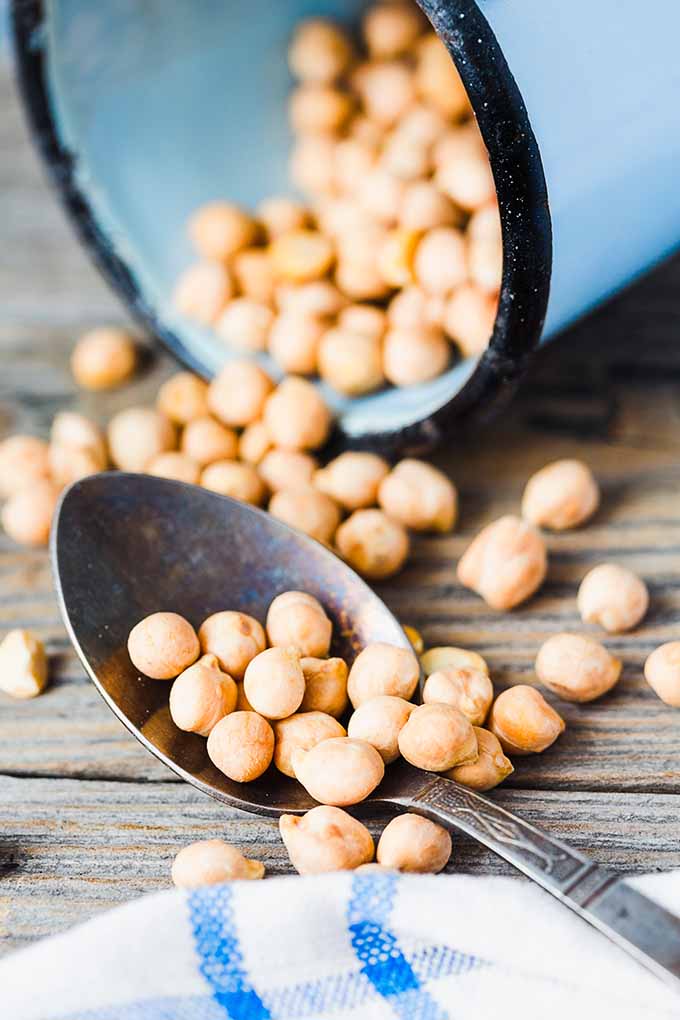
As emerging research highlights their many health benefits, this member of the legume clan is gaining status in preventative applications for weight management, as well as controlling cholesterol, blood sugar regulation, and much more.
Let’s have a quick look at this pulse’s history, stellar dietary value, and some cooking tips!
Chicks, Peas, and Rams – All in a Name!
These tiny beans are part of the Fabaceae family, known as the pea family.
The word “chickpea” comes from the first word of the bean’s full botanical name: Cicer arietinum.
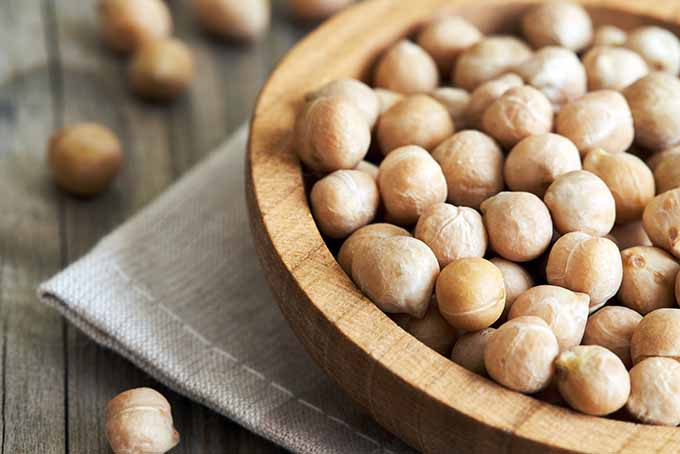
The second word, arietinum, translates to “ramlike,” referring to how the sprouted bean looks like a ram’s head with curling horns.
Garbanzos and chickpeas are not two different varieties of beans. They are one and the same! The term “garbanzo” is the Spanish word for this legume.
There is no clear explanation why a cute little bird is part of the name.
While the Old English term for chicken was cicen, similar to the cicer, the connection remains as fuzzy as a chick’s feathers.
One theory for its bird-themed name is that ground dried beans were often used as fodder for livestock, including chickens. Another explanation is that the very tip of the bean resembles a slightly hooked beak, similar to that of a chicken.
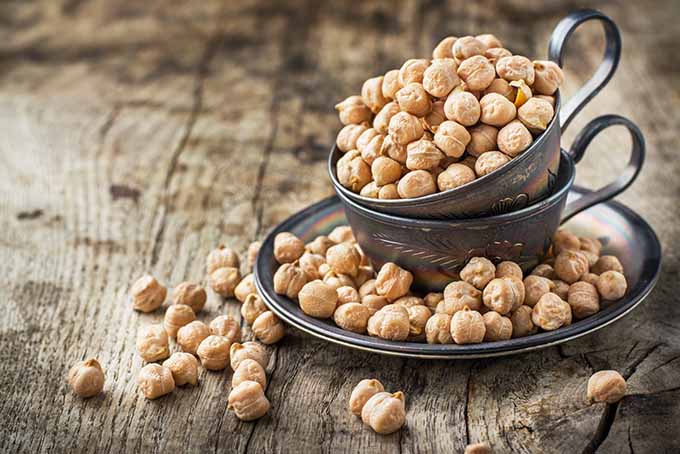
More than likely, there is no apparent connection between the bird and the bean, and the words have evolved separately from one another.
Throughout time and the globalization of this bean, cicer underwent various translations: from the French phrase pois chiche, to the English manipulation of the term to chich-pease, it has become what we know today as “chickpea!”
From the Fertile Crescent
One of the first cultivated crops from the Neolithic period over 10,000 years ago, they come from the Fertile Crescent region, and still figure prominently in the cuisines of this area.

There are two popular types: kabuli and desi.
Commonly cultivated throughout the Middle East and Mediterranean, the kabuli variety is characterized by a plump, round shape and creamy beige color. The beans have a thin, light outer layer.
Kabuli is the variety most often used for canning – it’s what you’ll see on the shelves at your grocery store.
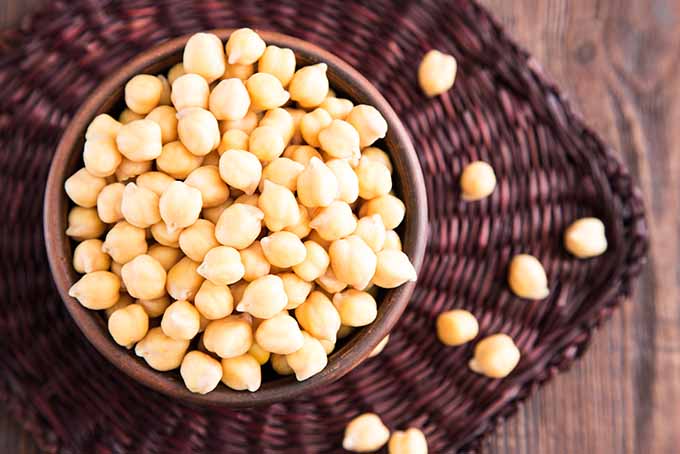
The beans of the second popular variety, desi, are a bit smaller in size, not as uniform in appearance, and may appear in colors of green, red, and black. They have a thick, tough outer layer.
They are a popular crop grown in areas including Asia, Iran, and Mexico.
Nutritional Value
As with many legumes, they are prized for their array of nutrients that contribute to vitality and good health.
They have outstanding levels of vegetable protein and fiber, and contain several key minerals and vitamins, such as manganese, folate, copper, phosphorous, iron, zinc, B6, and thiamin.
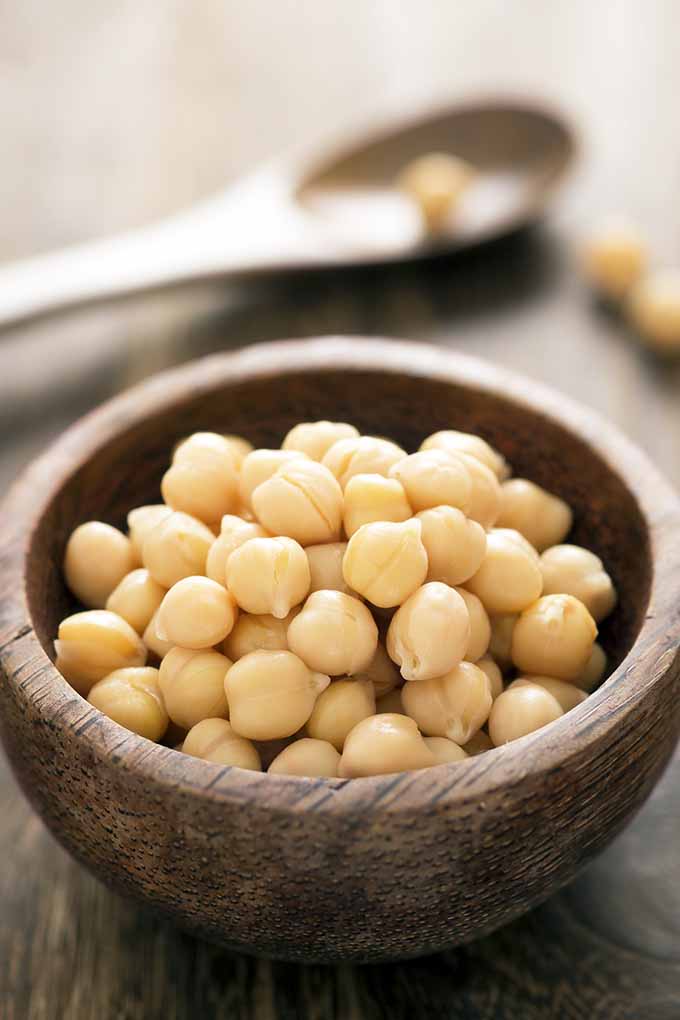
They also contain important polyphenols, such as carotenoids, phytic acids, and tannins.
Studies suggest that the regular consumption of pulses, such as garbanzos, may help to prevent chronic diseases like type 2 diabetes and cardiovascular disease, as well as playing an important role in weight management.
That’s a lot of goodness in a little package!
However, if you are following a FODMAP diet, all this goodness may be a little difficult to digest. Consuming the cooked canned version, rather than fresh, may help with the digestion process.
Cooking with These Cuties
A versatile pulse, they’re adaptable to many cooking applications.
And it’s all up to your own personal preferences and cooking style if you choose the dried or canned options available.

You can add them to rich and hearty stews and make a superb meatless alternative in loaves, cakes, meatballs, and burgers.
Dried and ground, garbanzo bean flour is a good gluten-free alternative to wheat flour. They’re great for a range of baked goods, like our chocolate chip cookies and chewy blondies.
Yes, you can grind them. There are many grains and legumes besides wheat that can be made into flour.
And of course, there are endless variations of delicious hummus!
But for another delicious way to enjoy all their goodness, it’s hard to beat the satisfying crunch of roasted chickpeas.
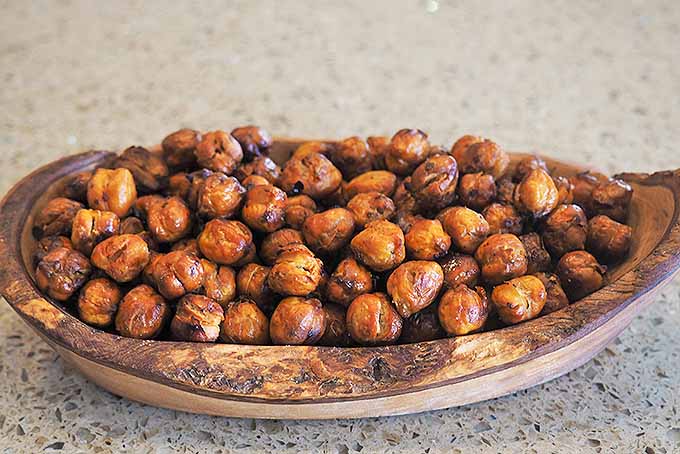
A Lovely Legume
Ever since it was first cultivated thousands of years ago, the garbanzo has become a seriously popular bean variety.
From canned to dried, hummus to flour, it is a lovely legume with so much culinary and nutritional value!
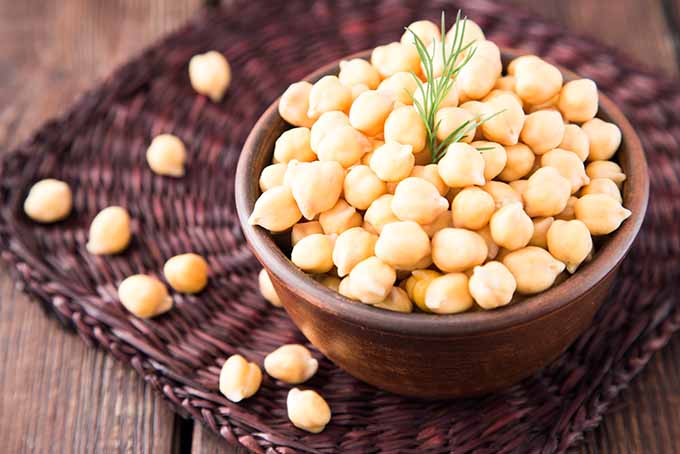
If you’re planning on using dried, follow our tips to reduce the amount of gas when digesting! You’ll thank us later…
Oh, and if you do decide to choose canned over dried, don’t forget to save the liquid leftover in the cans!
This amazing aquafaba can be used as an ideal egg substitute for a variety of recipes. Try our mile-high meringues, or our egg-free mayo.
Interested in learning more? Read our article on various methods for baking without eggs!
We’ve shared some of our favorite recipes, but we are excited to find out what your best recipes are that featurethis pretty pulse. Let us know how you use the garbanzo in your cooking by commenting below!
Don’t forget to Pin It!
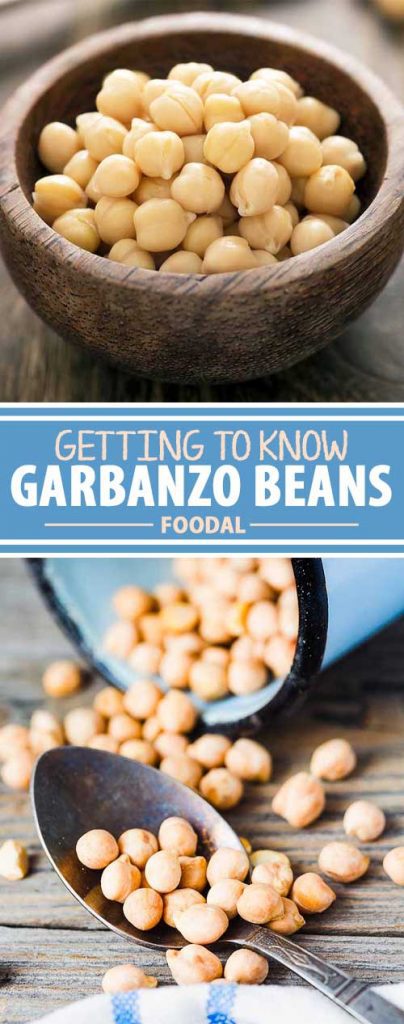
Recipe photo by Lorna Kring, © Ask the Experts, LLC. ALL RIGHTS RESERVED. See our TOS for more details. Uncredited photos: Shutterstock. With additional editing and writing by Nikki Cervone.
The staff at Foodal are not medical professionals and this article should not be construed as medical advice. Foodal and Ask the Experts, LLC assume no liability for the use or misuse of the material presented above. Always consult with a medical professional before changing your diet, or using supplements or manufactured or natural medications.
About Lorna Kring
Recently retired as a costume specialist in the TV and film industry, Lorna now enjoys blogging on contemporary lifestyle themes. A bit daft about the garden, she’s particularly obsessed with organic tomatoes and herbs, and delights in breaking bread with family and friends.



